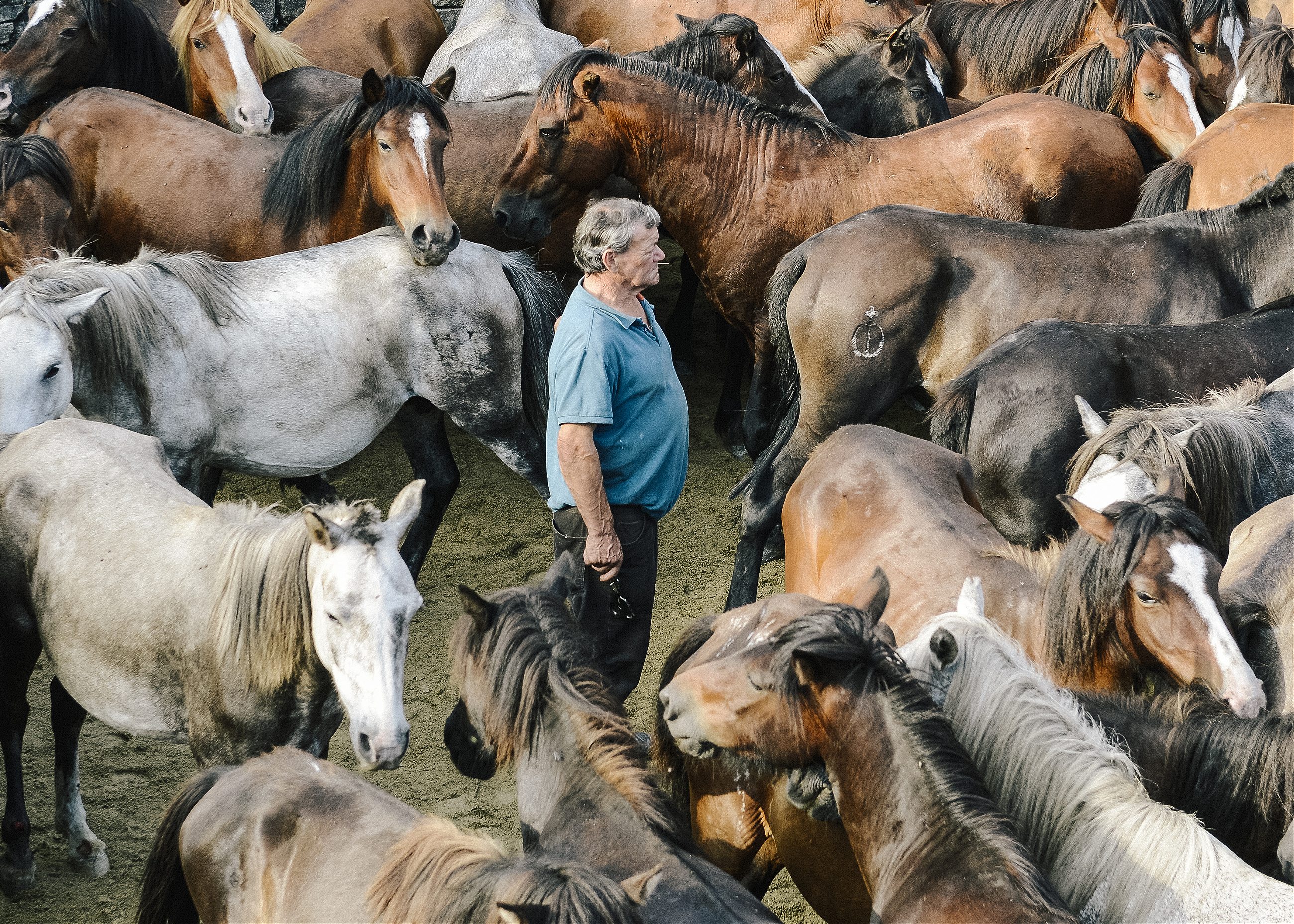Meet the horse wrestlers of rural Galicia.
It is seven in the morning and dozens of locals and visitors, on foot and on horseback, begin a walk from the church of Sabucedo to the top of the hills that surround this small village in the heart of Galicia. More than an hour later, they reach the top of the hill. The eyes of the farmers roam the extraordinary landscape, still shadowed by morning clouds.
The first whispers are heard and all eyes shift to a herd of 20 horses. A small group of men and women devise a plan to surround them. Walking slowly, they spread out around the animals. But the fog closes in and the herd escapes. At the top of the hill, Michel Touriño calls out, “Let’s enter the Galician jungle!” before running into the gorse shrubs that cover the land here.
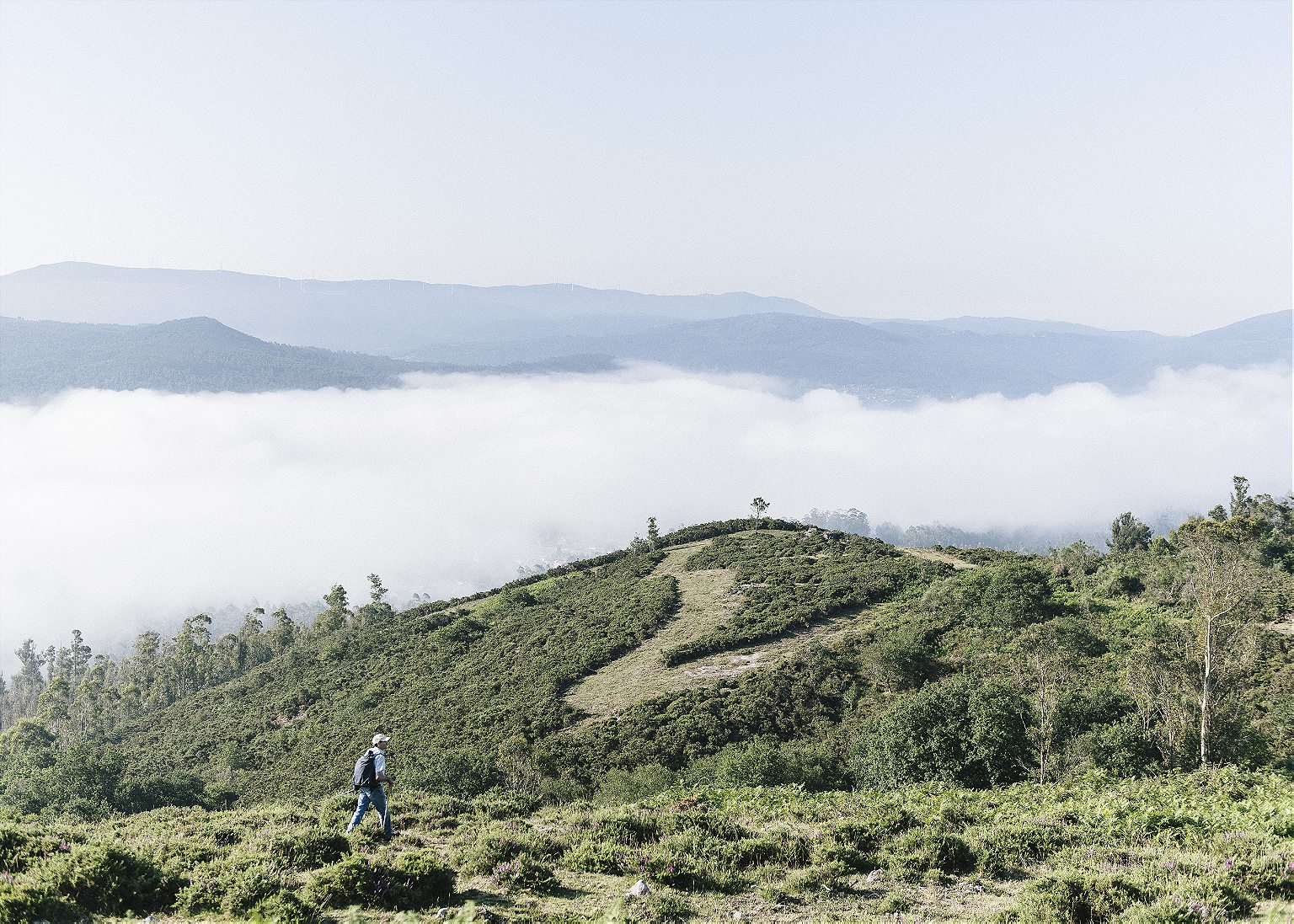
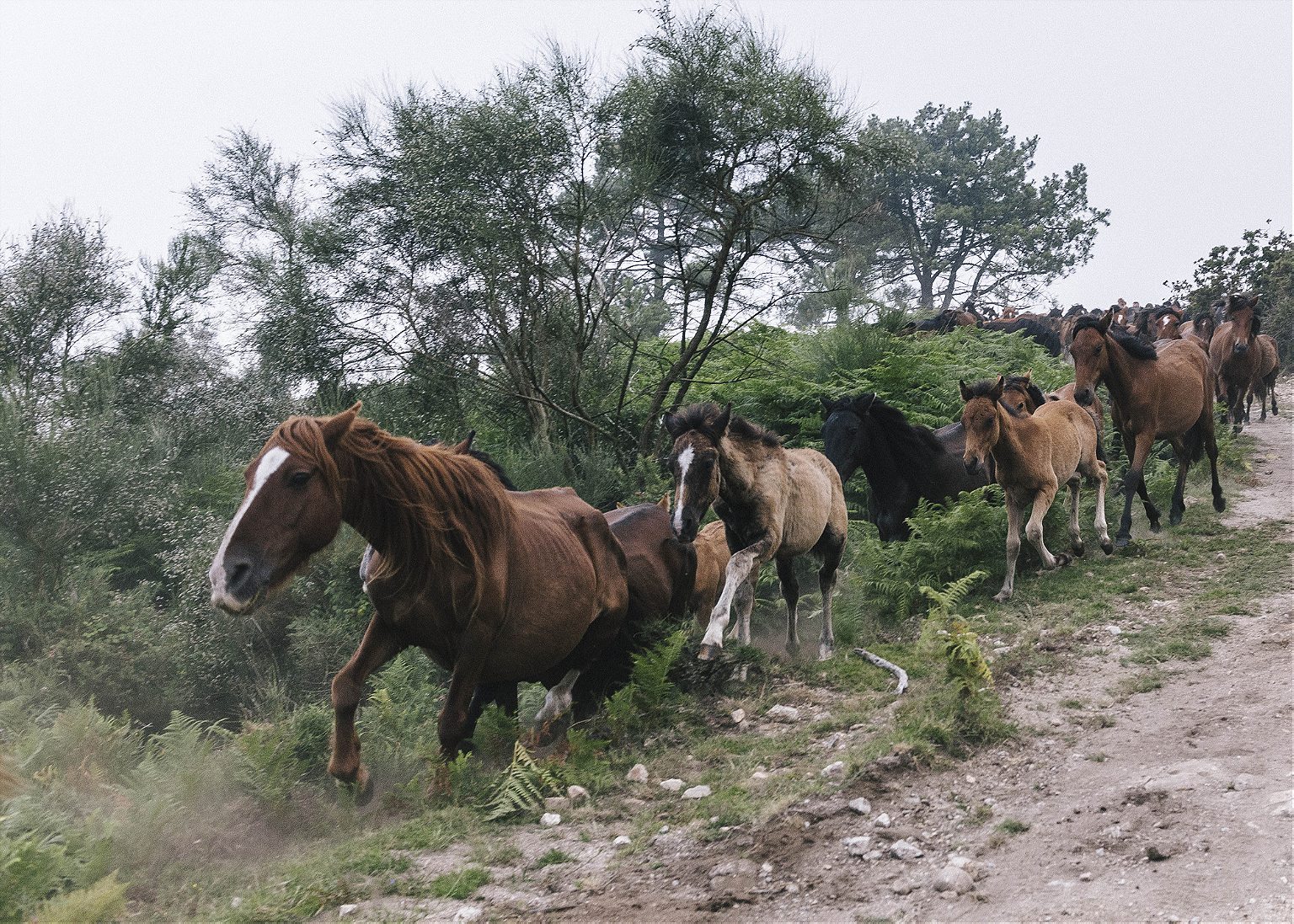
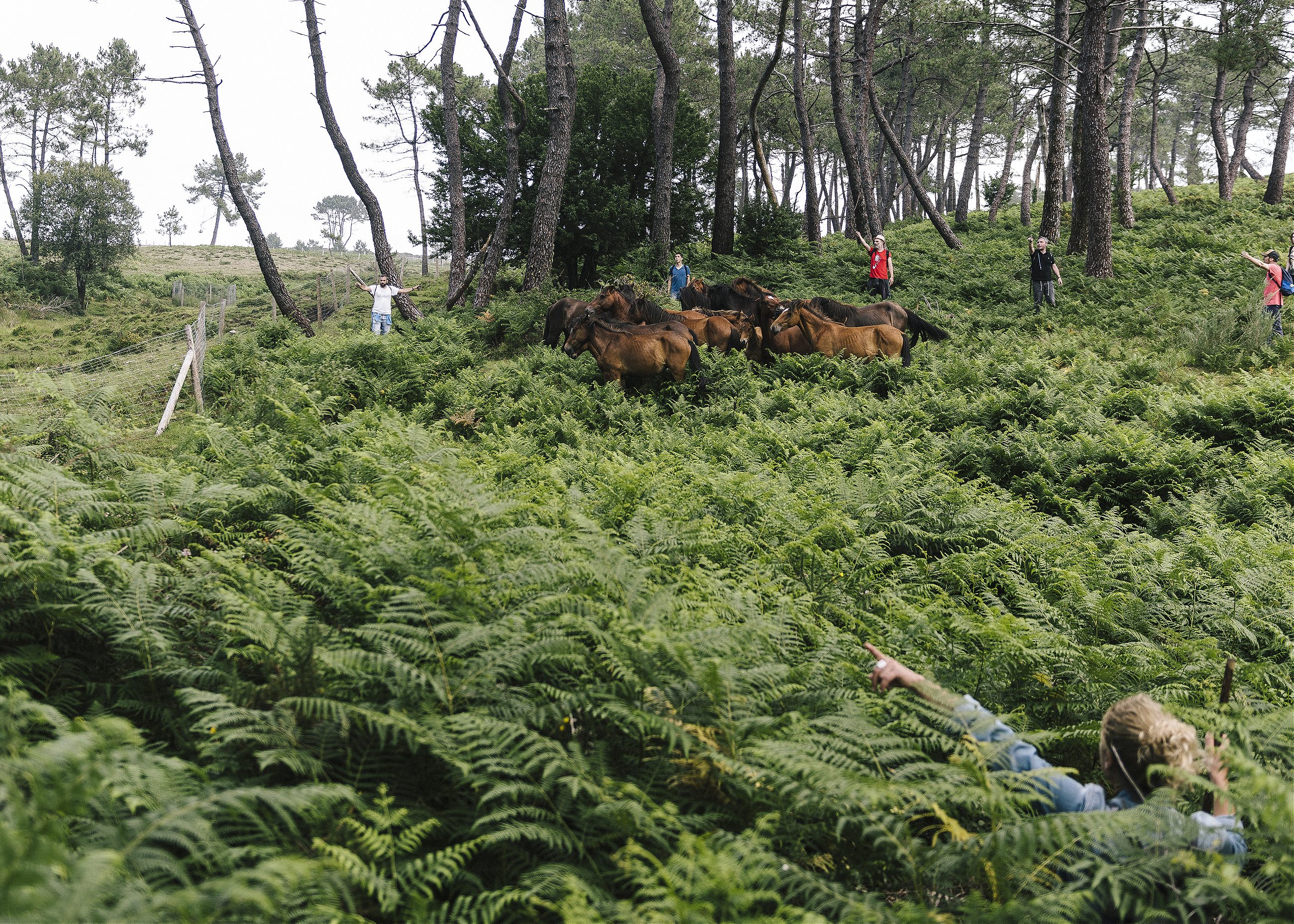
The day was long: it took more than 12 hours and 20 miles of travel, but the group finally manages to bring the 250 “beasts” down from the hills. Rapa das Bestas—the shaving of the beasts—is a ritual that plays out during the summer months in the hills that surround the rural villages of Galicia, Spain. Records of the rapa date back to the 18th century, but many believe the tradition is much older: ancient petroglyphs that depict men trying to wrestle horses lead many to believe that the tradition dates to the Bronze Age, and the Roman historian and geographer Strabo referred to it 2,000 years ago.
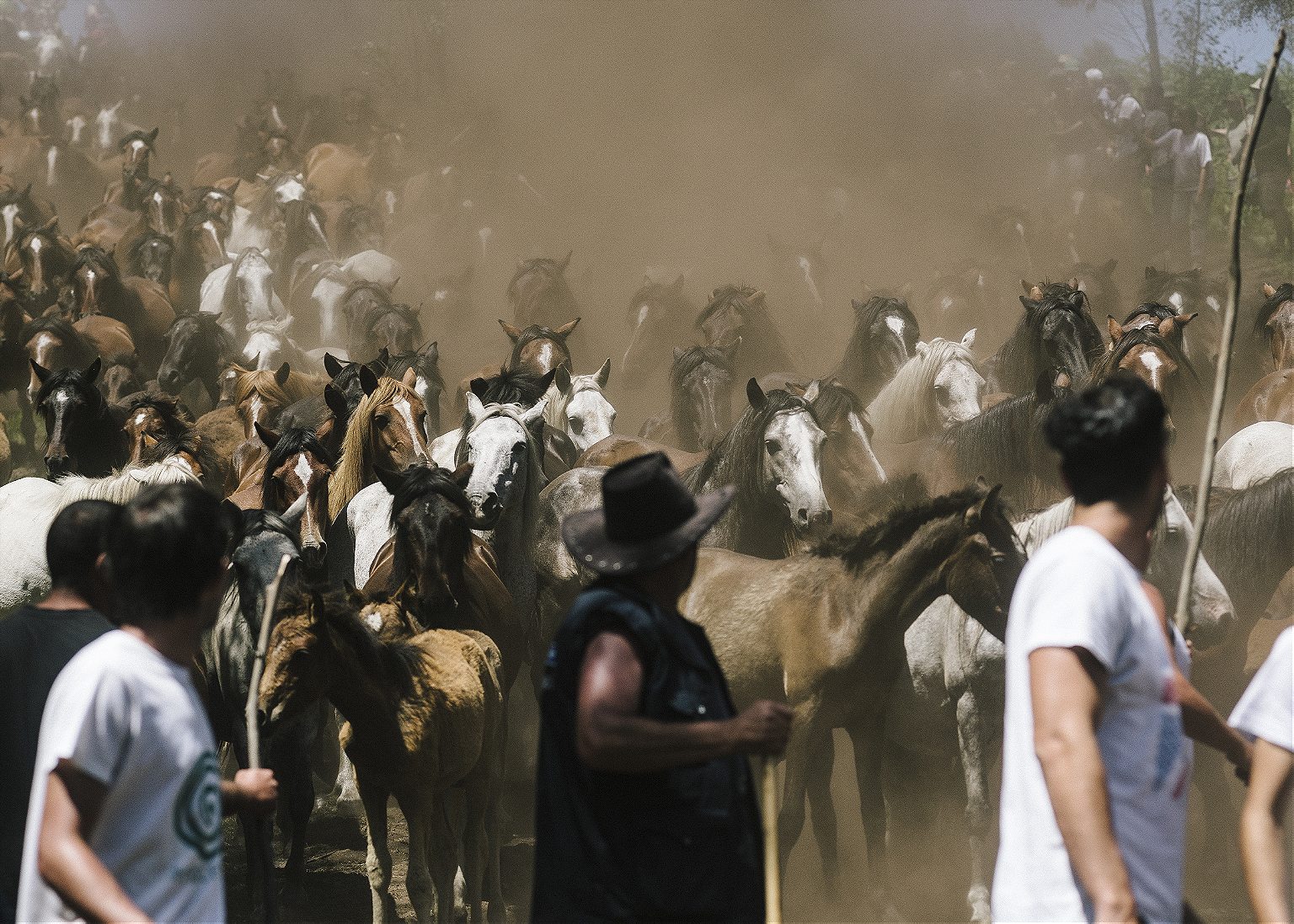
In this ritual, the small Galician horses that roam free throughout the year are forced down from the mountains. They are rounded up in a small, round pen known as a curro (roundup). After chasing the horses inside the curro, the aloitadores cut the horses’ hair and delouse it. Female foals are tagged by microchip, and then the horses are free to return to the mountains, until the same ritual is repeated the next year.
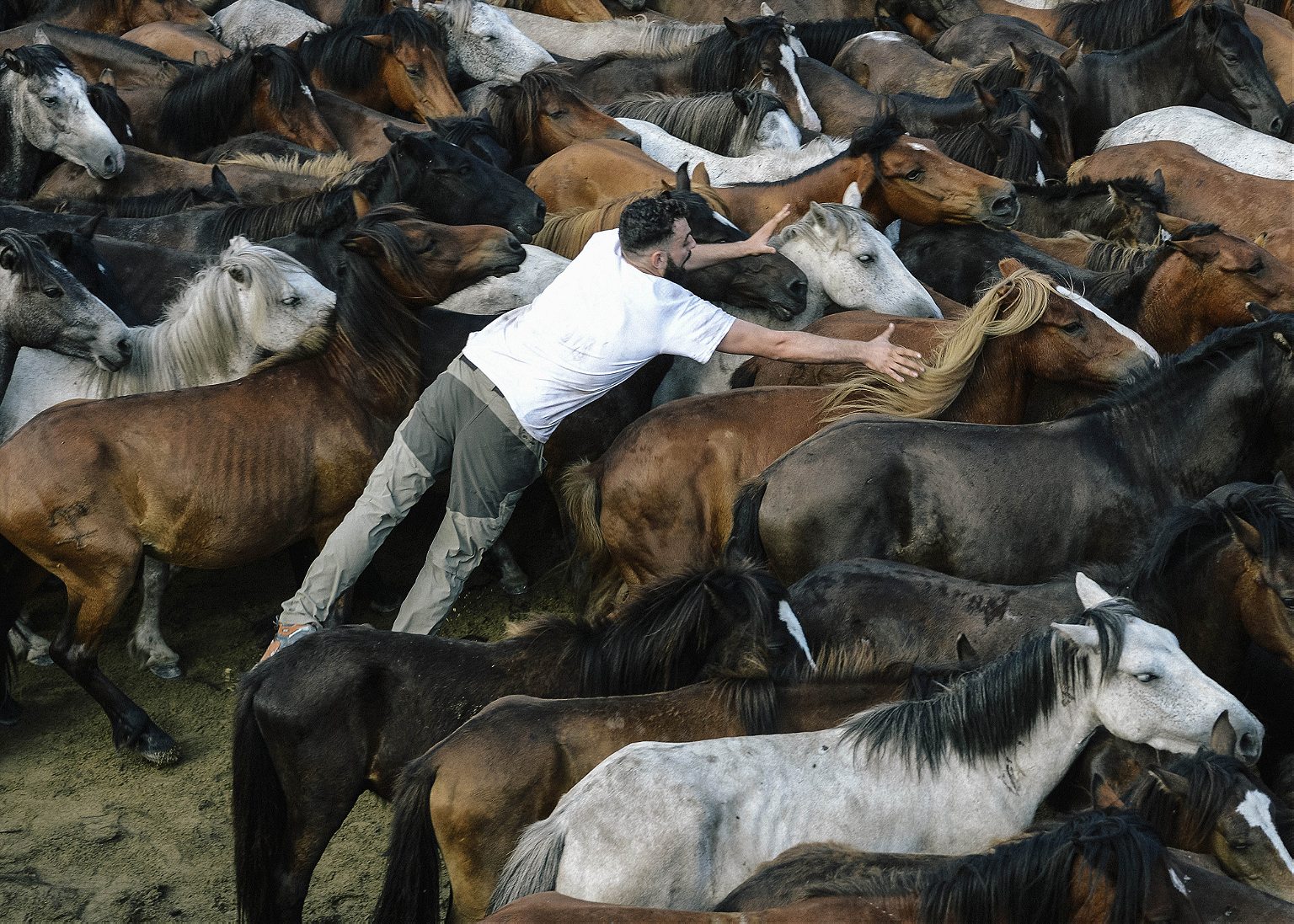
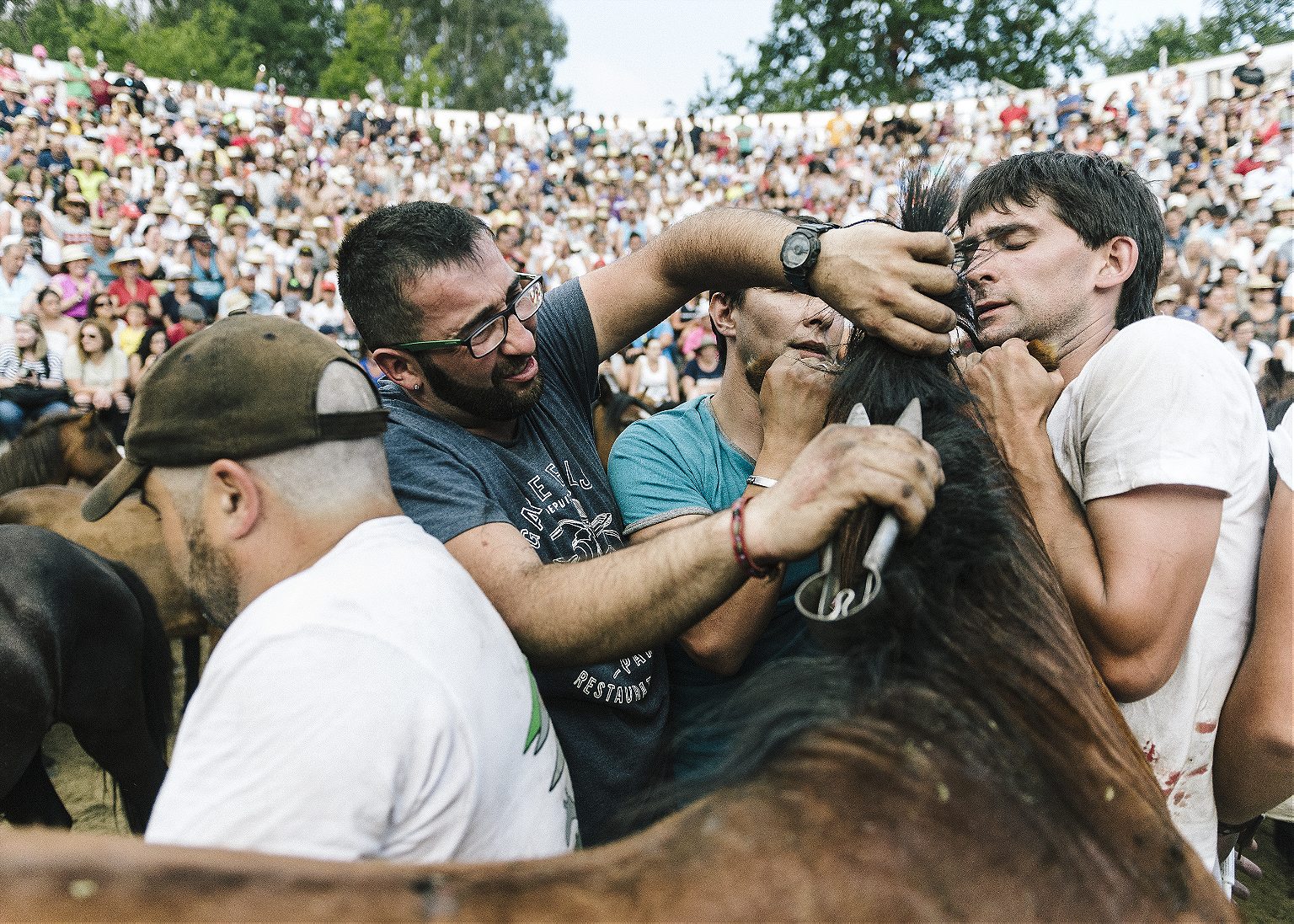
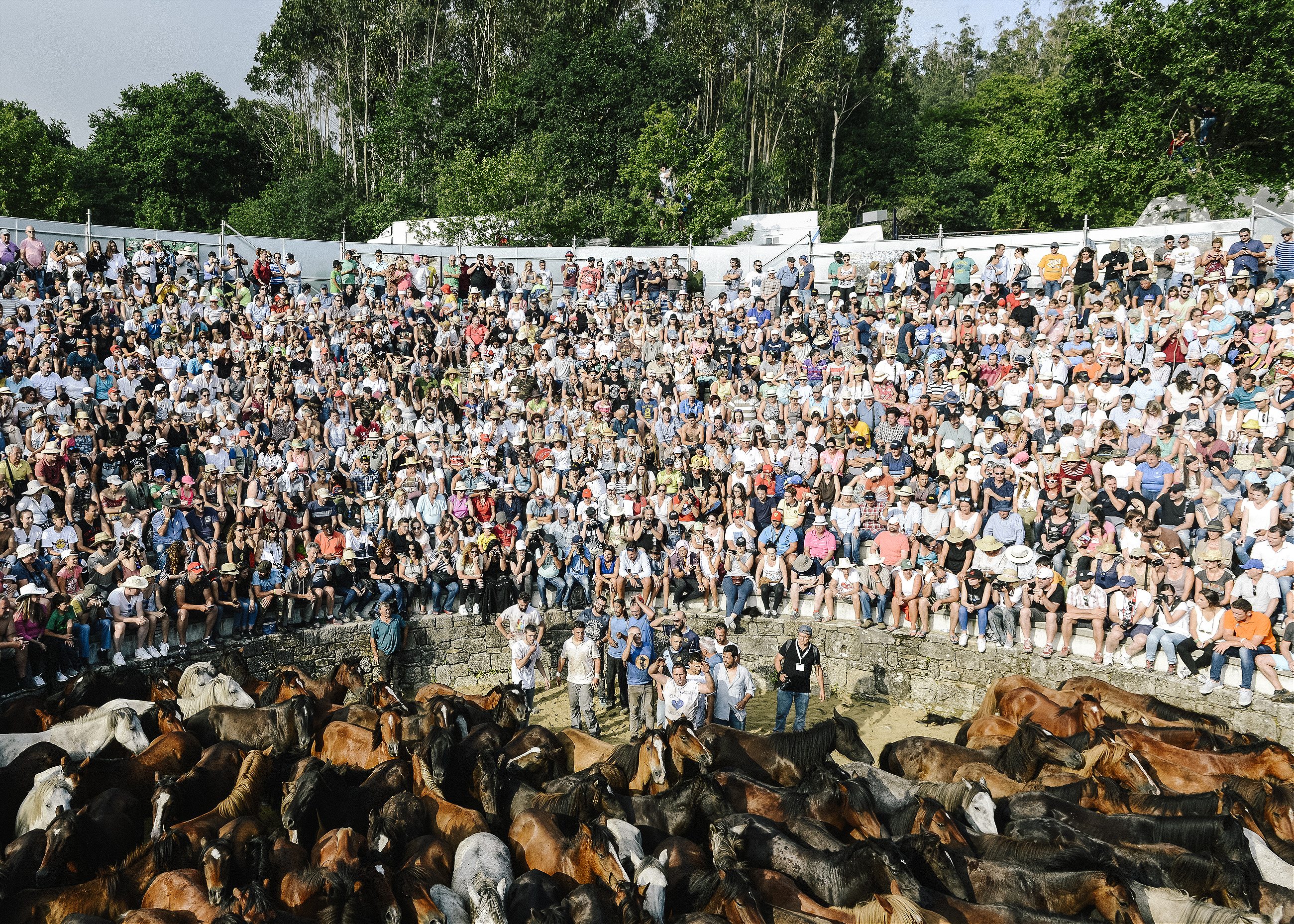
The most famous Rapa das Bestas is the one from Sabucedo, where the festivities last for three days and draw thousands of visitors. During the Rapa of Sabucedo, the aloitadores use only their own hands and strength to control the horses. Their skills are passed down from generation to generation: two aloitadores hold the horses head and one goes to the tail. It is a ritual tied to the essence of the Galician people, an assertion of identity, respect for nature, and community life.
